Daily Business Report-Jan. 29, 2019
California is casting off fossil fuels to become something that doesn’t yet exist: a fully electrified state of 40 million people. (Photo: CALmatters)
As California enters a brave new energy world,
can it keep the lights on?
By Julie Cart | CALmatters
Gretchen Bakke thinks a lot about power—the kind that sizzles through a complex grid of electrical stations, poles, lines and transformers, keeping the lights on for tens of millions of Californians who mostly take it for granted.
They shouldn’t, says Bakke, who grew up in a rural California town regularly darkened by outages. A cultural anthropologist who studies the consequences of institutional failures, she says it’s unclear whether the state’s aging electricity network and its managers can handle what’s about to hit it.
California is casting off fossil fuels to become something that doesn’t yet exist: a fully electrified state of 40 million people. Policies are in place requiring a rush of energy from renewable sources such as the sun and wind and calling for millions of electric cars that will need charging—changes that will tax a system already fragile, unstable and increasingly vulnerable to outside forces.
“There is so much happening, so fast—the grid and nearly everything about energy is in real transition, and there’s so much at stake,” said Bakke, who explores these issues in a book titled simply, “The Grid.”
The state’s task grew more complicated with the announcement that Pacific Gas and Electric, which provides electricity for more than 5 million customer accounts, intends to file for bankruptcy in the face of potentially crippling liabilities from wildfires. But the reshaping of California’s energy future goes far beyond the woes of a single company.
The 19th-century model of one-way power delivery from utility companies to customers is being reimagined. Major utilities—and the grid itself—are being disrupted by rooftops paved with solar panels and the rise of self-sufficient neighborhood mini-grids. Whole cities and counties are abandoning big utilities and buying power from wholesalers and others of their choosing.
With California at the forefront of a new energy landscape, officials are racing to design a future that will not just reshape power production and delivery but also dictate how we get around and how our goods are made. They’re debating how to manage grid defectors, weighing the feasibility of an energy network that would expand to connect and serve much of the West and pondering how to appropriately regulate small power producers.
_________________
Coronado has record-breaking year
The island resort town of Coronado continued to set home sales records while other coastal resort markets such as The Hamptons, Cape Cod and California resort towns like Laguna Beach and La Jolla remain flat or slowed from 2017 sales. Nationally, the country experienced an uptick in the consumer confidence index from 122.1 to 128.1, an eighteen year high.
Flagship Properties, a firm that tracks and specializes in the luxury market, (+ $3-million) reports that in 2018, a total of 50 luxury homes sold which was more than double the 24 homes sold in 2017 in the village of Coronado. According to the San Diego MLS, the fourth quarter saw 12 luxury closings including Flagship’s sale of the iconic oceanfront estate Seashore for $10.3-million. January 2019 also opened strong with an additional 4 luxury home sales pending.
The average sales price in the luxury segment exceeded $4.5-million in 2018.
“This was amazing since many communities around San Diego were reporting slowing sales,” said Carrie OBrien, CEO of brokerage Flagship Properties. Overall detached home sales in 2018 in the village of Coronado, consisted of 139 sales at a median price of $2.25 million versus 137 single-family sales at amedian price of $1.85 million in 2017.
Carrie reported that Coronado’s “For Sale” Inventory of only 48 homes is one of the lowest in 12 years.
_________________
Nathan Fletcher appointed to
California Air Resources Board
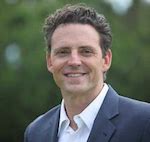
San Diego County Supervisor Nathan Fletcher, 42, has been appointed to the California Air Resources Board by Gov. Gavin Newsom.
Since 2013, Fletcher has been a professor of practice in political science at the University of California, San Diego. Fletcher was senior director for global strategic initiatives at Qualcomm from 2013 to 2017. He served as a member of the California State Assembly from 2008 to 2012 and was a member of the United States Marine Corps from 1997 to 2007. He is a member of the San Diego Metropolitan Transit System Board of Directors, the Regional Task Force on the Homeless, and the San Diego Association of Governments’ Transportation Committee. The position requires Senate confirmation and the compensation is $48,789. Fletcher is a Democrat.
_________________
Cushman & Wakefield report: San Diego
industrial market explodes in 2018
San Diego’s industrial sector saw occupancy growth explode in 2018, achieving nearly 2 million square feet of net absorption, according to a Cushman & Wakefield report. The annualized figure for 2018 more than doubled the net growth of each of the past two years. Meanwhile, the average asking rent set another all-time high to conclude the year.
Jolanta Campion, Cushman & Wakefield’s research director in San Diego, said, “After a sluggish start to 2018, the final three quarters of the year all reported robust gains, raising net absorption to 1.9 msf annually. The fourth quarter marked San Diego’s 29th of the last 30 quarters to report occupancy growth—only the second quarter of 2017 had reported a loss during this long stretch. Further, compared to the fourth quarter’s move-ins, which consisted of organic expansions as well as pre-leased new construction, the quarter’s move-outs were minimal.”
According to the report, at the close of 2018, overall industrial vacancy in San Diego stood at 5.4 percent, a modest increase of 40 basis points (bps) from the prior quarter and 60 bps above year ago. The fourth quarter of 2018 marked the first quarter in more than a year that vacancy moved above the 5 percent threshold. Notably, direct vacancy (excluding sublease space) was just 4.4 percent.
“This slight quarterly increase in overall vacancy was fully expected due the large amount of speculative construction that delivered in the final period of the year, as over half of the quarter’s construction completions were not pre-leased before delivery,” said Campion.
_________________
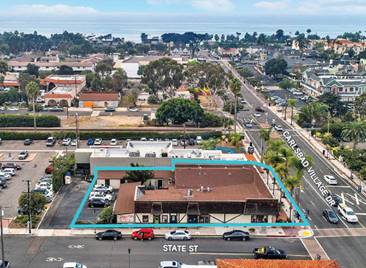
Carlsbad retail building sells for $3.7 million
Colliers International San Diego Region announces the sale of a 6,700 square foot, multi-tenant retail building located at 457 Carlsbad Village Drive, Carlsbad, for $3.7 million.
Amy McNamara and Joe Brady of Colliers International San Diego Region represented the buyer, Equity Three Properties LLC, a subsidiary of Viewpoint Equities, and the seller, Ryburn Building, LLC.
At the time of sale, the single-story property was fully occupied by five tenants: Blues & Shoes, The Style Lounge, Popular Nails, Ragz Revolution and Pacific Coast Printing.
_________________
Siddhartha “Sidd” Vivek is new CEO of Junior Achievement
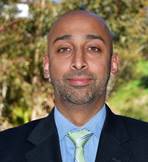
Siddhartha “Sidd” Vivek has joined Junior Achievement of San Diego County as its new president and chief executive officer. He suceeds interim President Steve Rowe.
Vivek brings a unique wealth of knowledge and understanding of youth development and nonprofit sectors to JA. While he held various positions over the past 11 years at the YMCA of San Diego County, he most recently served as director of strategic partnerships, which included oversight of fundraising at one of the largest Y’s in Southern California. In this role, he led efforts to diversify and expand outreach programming by growing revenue by nearly 30 percent over the past four years. Prior to joining the YMCA, Vivek held multiple leadership positions in Washington, D.C. focusing on education policy and the intersection of government, industry, and community-based organizations.
The appointment of Vivek, a graduate of George Washington University, marks a new chapter for Junior Achievement. Last year, JA celebrated a historic milestone of reaching 1 million students since the branch opened in 1950. JA’s mission is to get K-12 San Diego students “real world ready” by showing them how to get a job, start a business and how to manage their money.
_________________
Cubic named Best Employer for Diversity by Forbes
Cubic Corporation announced Monday that it was named a 2019 Best Employer for Diversity by Forbes. In partnership with market research company Statista, Forbes surveyed U.S. employees working for organizations employing at least 1,000 people within their U.S. operations. The second annual list ranks the top 500 U.S. employers that received the most recommendations from survey respondents and have the most diverse boards, executive ranks and proactive diversity and inclusion initiatives.
_________________
Personnel Announcements
Richard Pasco joins Histogen Inc.
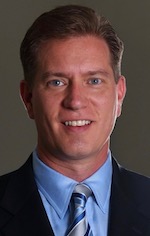
Richard Pasco has been named chairman of the board and chief executive officer of Histogen Inc., a regenerative medicine company focused on stimulating the body’s stem cells to regenerate tissues and restore youthful function. He will lead the company through its next stages of clinical, corporate development and financial growth.
Pascoe brings a strong track record with over 25 years of experience building and leading organizations in transition. He has previously been responsible for raising over $250 million in equity capital, closing business development transactions valued at over $2 billion, and launching prescription therapeutics in the U.S. generating net sales of over $1 billion across multiple therapeutic categories. Most recently, he served as CEO of Apricus Biosciences Inc., a biopharmaceutical company focused in urology and rheumatology, where he led European regulatory approval efforts and the sale of the ex-U.S. rights for its lead asset Vitaros in 2017 and more recently completing a successful merger with Seelos Therapeutics.
Prior to Apricus, Pascoe was president and CEO of Somaxon Pharmaceuticals Inc., where he was responsible for the FDA approval of Somaxon’s lead drug Silenor and the merger of Somaxon and Pernix Therapeutics in 2013.
_________________
Dale Snead and Brian Surratt join
Lavine, Lofgren, Morris & Engelberg
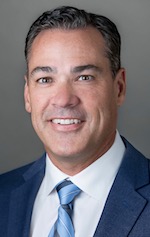
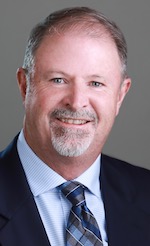
Dale Snead and Brian Surratt have joined the accounting firm of Lavine, Lofgren, Morris & Engelberg LLP as partners.
Snead specializes in providing quality, personalized financial guidance to local individuals and businesses. His expertise ranges from tax and accounting services to audits and financial statements. Prior to joining LLME, Snead was the managing partner of Snead & Associates for more than 14 years. He received his Bachelor of Science degree in accounting from San Diego State University and holds a Master of Science in Taxation from the University of Southern California – Marshall School of Business.
Surratt brings his business acumen and expertise working with small businesses to LLME. He previously spent 10 years at LLME before founding Aztec AccountancyGroup Inc., a small accounting firm that provided tax services for a variety of clients. He received his Bachelor of Arts degree in Economics from San Diego State University and holds a Master of Science in Accounting from the University of Florida.
_________________
_________________
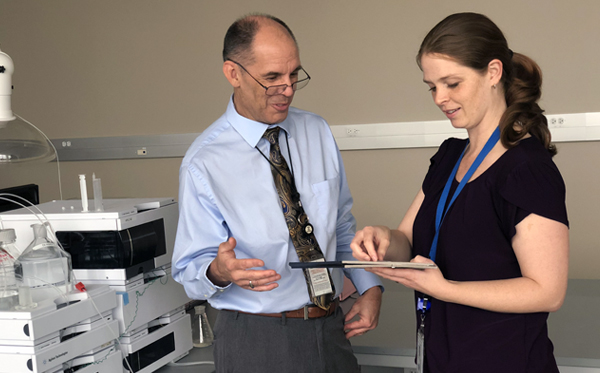
Investigating Deaths: What it takes to be a forensic pathologist
By Yvette Urrea Moe
If your exposure to forensic pathology is TV crime shows, you may think it’s purely a tool for solving criminal cases. But the science behind determining a cause of death has tremendous value at a personal level for those who have lost a family member and for society as a gauge of public health and safety. San Diego County Chief Deputy Medical Examiner Steven Campman said the field is an opportunity to do extremely interesting work and make significant contributions that could include diagnosing something that might save lives.
Yet, he says the San Diego County Medical Examiner’s Office has seen fewer candidates for their forensic pathology fellowship program, as have training programs around the country, and he is concerned having enough forensic pathologists could be a problem in the future.
Campman said he knew he wanted to go into his field when he was in high school, and 35 years later he continues to find his career satisfying.
“We figure things out, it’s challenging work and hugely important for all kinds of reasons. We provide answers for families, and for the public’s safety at times,” Campman said. “We provide objective documentation of what’s happened, maybe for use in court, and in the bigger picture for the public good.”
Forensic pathologists are doctors who specialize in the study of injuries and sudden deaths. This is done by examining medical evidence, usually by performing autopsies, to determine the cause of death, as well as evaluating the person’s medical, mental and behavioral history, as well as law enforcement investigative information to determine a manner of death and document how the person sustained injuries.
A medical examiner is a forensic pathologist who works for a legal jurisdiction such as a county or state.
A pathologist may do this work only in the autopsy room, or if requested, by also going out in the field. It often means talking with friends or family of the person to better understand the circumstances and history.
Leslie Anderson, a Forensic Pathology Fellow, started working at the San Diego County Medical Examiner’s Office in July. She is originally from Canada, where she obtained her degree and did her residency. When it came time to apply for her final year of subspecialty training, she chose San Diego because the program is fully accredited by the National Association of Medical Examiners.
Besides sunnier and milder weather, Anderson said she was also looking for a change to expand her training. She points out that there are “different types of deaths, different social issues, and different drugs” in San Diego. Indeed, she has handled “really amazing diverse cases,” including gunshot wounds, drownings and scuba deaths, which are not as common in Canada.
“They have a really strong program here. The facilities are newer and they have toxicology on site here. I know I’m going to get excellent training,” said Anderson. “It’s been an excellent experience so far.”
She said she became interested in this field because as a child she would watch murder mystery shows with her parents and she was always fascinated with how examining a victim could help solve crimes. Anderson sees her work as falling “at the intersection of medicine and the criminal justice system.” She also spoke of the preventative role it can play in public health and trends, as well as the healing impact on individual families.
“It’s a wide-ranging impact and it’s a part of life that most people don’t often get to see. It’s fascinating and a privilege to be in this line of work,” Anderson said.
Some examples of how it is plays a role in the public good is in epidemiology of deaths, or with death trends such as drug overdoses of particular drugs or drug compounds, or with increases in deaths of the same manner, such as pedestrian deaths. Often information gathered regarding death trends and increases can be shared with decision-makers to try to determine if there are any solutions to prevent or reduce those deaths, Campman said.
To become a forensic pathologist, people need to obtain a four-year college degree and a four-year-program medical degree. During medical school, everyone receives general medical training including working with patients under supervision, baby delivery, internal medicine, pediatrics and surgery. Campman said this allows students to see what is right for them. If after that, they are interested in specializing in pathology, they must complete a residency of 4-5 years at a hospital and then another year of subspecialty training in forensic pathology, Campman said. The County offers a fellowship for forensic pathology at the Medical Examiner’s Office, he said.
Currently, two San Diego County deputy medical examiners are former fellows of the office, Campman said.
Certainly, it is not a career for everyone. For all the intriguing, enthralling, and rewarding work, there will also be times when they may see disturbing deaths or hear about difficult circumstances, and they will talk to angry grieving family members on occasion. While there will always be some of that, Campman always remembers that his work can bring solace and understanding to grieving families.
In addition to formal training, Campman said forensic pathologists must have objectivity, a background understanding of people in general, some knowledge about grief, and the ability to talk to people in an understanding and thoughtful manner, Campman said.
“People do go into forensic pathology for all kinds of different reasons,” Campman said. “There are people like me that went into it on purpose because of how interesting it seemed, but there are others that go into pathology because maybe they started off in surgery but found that they couldn’t be away from their family so much, be on call all the time and have to work in an operating room constantly, so they chose pathology as an option that might allow for a better family life.”
Visit the San Diego County Medical Examiner’s Office website to learn about available Forensic Pathology Fellowships or other positions at the Medical Examiner’s Office.
Yvette Urrea Moe is with the County of San Diego Communications Office.


